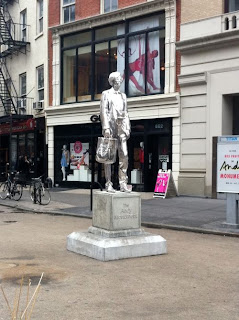Search This Blog
A strolling guide to New York City by writer and photographer Teri Tynes. Active during the years 2007-2021, Walking Off the Big Apple plans new walks away from the city in the summer of 2025.
Posts
Showing posts from April, 2011
Coming this summer 2025
A Hudson River Camino - a cultural and spirit-filled pilgrimage up river.
New York Street Scenes: Pictures from April 2011
- Get link
- X
- Other Apps
New York's Legendary Club Days: In the Limelight
- Get link
- X
- Other Apps
On the Met's Roof Garden with Sir Anthony Caro
- Get link
- X
- Other Apps
Beats, Rhymes And Life: The Travels Of A Tribe Called Quest (A Review), 2011 Tribeca Film Festival
- Get link
- X
- Other Apps
New York, New York Films at the 10th Tribeca Film Festival
- Get link
- X
- Other Apps
Finally, the Look of Springtime in New York
- Get link
- X
- Other Apps
A Walk for the Optimistic Modernist: From MoMA to the United Nations
- Get link
- X
- Other Apps
Negotiating a Walk Through Steinunn Thórarinsdóttir’s BORDERS at Dag Hammarskjöld Plaza
- Get link
- X
- Other Apps
Ludwig Mies van der Bear: Urs Fischer's Giant Teddy Bear Meets the Seagram Building
- Get link
- X
- Other Apps
A Twilight Walk on Thompson and Sullivan Streets
- Get link
- X
- Other Apps
June 11, 2025 in Beacon, NY

On a day trip from NYC





